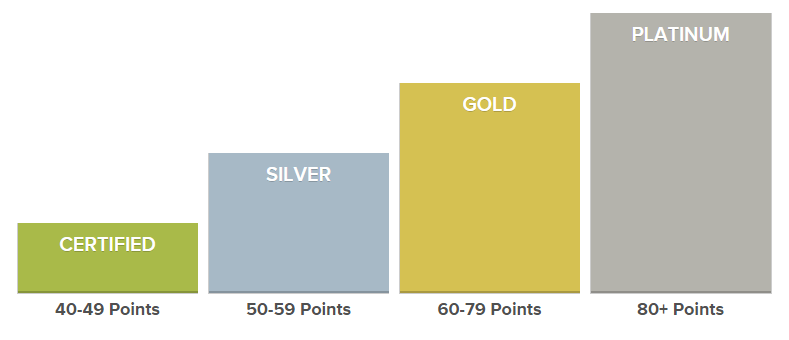What is LEED Certification?
LEED stands for Leadership in Energy & Environmental Design and it is a green building certification program led by the US Green Building Council (USGBC). It strives to recognize building strategies and practices that are environmentally friendly and sustainable.
It was developed in 1994 and the rules and rating system are periodically updated by members of the council.
Read more on the US Green Building Council website

How do buildings get certified?
To receive LEED certification, building projects satisfy prerequisites and earn points for different categories to achieve different levels of certification.
There are five different rating systems for the diverse types of projects that can be certified, namely:
- Building design and construction
- Interior design and construction
- Building operations and maintenance
- Neighborhood development
- Homes
- Integrative Process: requirements, while not a credit category, promote reaching across disciplines to incorporate diverse team members during the pre-design period.
- Location and transportation: credits reward projects within relatively dense areas, near diverse uses, with access to a variety of transportation options, or on sites with development constraints.
- Materials and Resources: credits encourage using sustainable building materials and reducing waste. Indoor environmental quality credits promote better indoor air quality and access to daylight and views.
- Water efficiency: credits promote smarter use of water, inside and out, to reduce potable water consumption.
- Energy and atmosphere: credits promote better building energy performance through innovative strategies.
- Sustainable sites: credits encourage strategies that minimize the impact on ecosystems and water resources.
- Indoor environmental quality: credits promote better indoor air quality and access to daylight and views.
- Innovation: credits address sustainable building expertise as well as design measures not covered under the five LEED credit categories.
- Regional priority credits: address regional environmental priorities for buildings in different geographic regions.
Based on the rating scale, buildings are certified in nay of the ranking categories:
Why is LEED a problem for bird-window collisions?
LEED certification gives one pilot credit for having bird friendly features (PC55). However, natural light availability receives 2-3 points, optimized energy performance is worth up to 18 points, and quality views can add one more credit. Windows are often used to enhance these features, and energy efficient glass is not always bird friendly.

